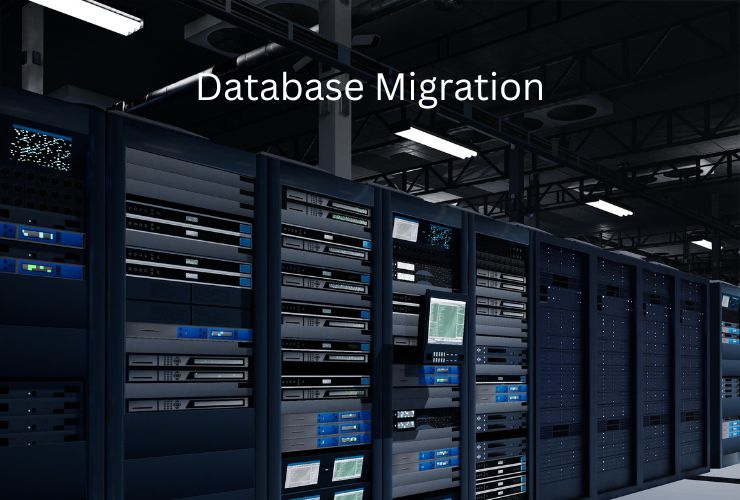Database migration is considered one of the most important – and often challenging – jobs in any IT transformation project. Whether it be a shift from on-premise to the cloud, upgrading to a new platform, or changing database engines, an unsuccessful migration can lead to data loss, slow performance and unplanned downtime.
With the rising adoption of cloud services and distributed architectures, organizations are increasingly modernizing their databases for scalability, flexibility and cost. Unfortunately, though, many don’t realize the challenges involved in migrating a large scale and mission critical data systems.
Having knowledge of these common pitfalls, and how to avoid them, can be the difference between a smooth transition and costly disruption.
1. Lack of Planning and Assessment
Insufficient planning is one of the primary reasons database migrations fail. Teams often take off on migration execution without a full understanding of the impacts that migration can have on the organization. In fact, many times teams forget to assess key variables such as the volume of data to be migrated, dependencies on the data, schema differences, or application integration points.
For instance, a retail organization migrating an app from an Oracle database to PostgreSQL we may not consider that certain proprietary functions associated with Oracle have no exact equivalents in PostgreSQL. Poor mapping could result in broken business processes and workflows.
How To Avoid It:
- Perform an exhaustive pre-migration assessment of the current environment to understand the data structure and usage/devices.
- Have a documented current environment including schema, stored procedures, triggers, etc.
- Define what success looks like with the migration (just performance improvements, overall cost reductions, modernization upgrade, etc.).
- Create a rollback plan that allows for seamless restoration of services if viable conditions are not validated during the migration.
- Having a sound roadmap gives the leadership team a chance to proactively identify hurdles early and reduces both time and risk.
2. Overlooking Data Quality Challenges
Transferring bad data simply shifts the problem somewhere else. Bad data—including duplicates, inconsistencies, or missing values—can ruin the target database and cause reliability issues with the systems.
Organizations often run into serious problems during migration when they realize error-laden data, due to years of accumulation, and inconsistencies in legacy data become one of the biggest roadblocks.
How To Avoid It:
- Conduct a thorough data audit prior to migration. Identify duplicate records, orphaned records, and obsolete data fields.
- Clean and normalize data to help ensure it is as accurate and consistent as possible.
- Use ETL (Extract, Transform, Load) or ELT pipelines to validate and transform data prior to arriving at the target database.
- Continuously monitor data quality after migration to maintain integrity.
- Quality in equals quality out. Quality data leads to a better experience and performance of applications after migration.
3. Insufficient Testing
One of the most prevalent – and most perilous – mistakes that you can make while migrating is forgoing or limiting the testing process. In some situations, even a little mistake such as mismatched data types or an encoding error could precipitate a system crash, data loss, and/or failed queries.
How to Avoid It:
- Establish a staging environment that closely mirrors production.
- Run unit, integration, and performance tests on the migrated dataset.
- Check for data integrity by examining record counts, indexes, and key relationships from the source to target.
- Perform user acceptance testing (UAT) to ensure that the application and reports are functioning as expected post-migration.
- Testing extensively can reveal issues early in the migration process, ultimately saving you significant time and expense.
4. Underestimating Downtime and Impact on Performance
Even a well-planned migration can incur downtime or performance delays, especially for high-volume systems. Businesses that do not plan for disruption can sooner or later incur customer dissatisfaction or lost revenue.
How to Avoid It:
- Schedule the migration during downtime or outside of busy hours.
- Use replication, or further incremental synchronization, to keep the source and target databases in sync prior to the final cutover.
- Use blue-green deployments or rolling migrations to minimize service disruption.
- Effectively communicate expected downtime for the new platform, or disaster recovery process with stakeholders or users.
5. Security and Compliance Oversights
Database migrations usually entail transferring large amounts of sensitive data – which often includes personally identifiable information (PII). If this data is not protected, it could expose the organization to security breaches, compliance issues, and financial repercussions.
How to Avoid It:
- Ensure SSL/TLS encrypted connections for data in transit and encryption-at-rest in the environments you’ll migrate to.
- Have a full understanding of which compliance standards apply (such as GDPR, HIPAA, or SOC 2) before performing the migration.
- During migration, limit access privileges to only those authorized.
- Create auditing and logging during the migration to keep track of the migration activity.
- Security should be a first consideration, not an afterthought; it is essential for being trusted and being compliant.
6. Not Utilizing the Right Migration Tools
There is no one-size fits-all tool for database migration; utilizing an incompatible or underpowered tool for migration can lead to data corruption, incomplete data migration, or poor performance.
How to Avoid It:
Consider which tools are suited for your database type, workload, and migration complexity.
Tools to consider are:
- AWS Database Migration Service (DMS) – for cloud-based migrations.
- Azure Database Migration Service – for hybrid and Microsoft ecosystems.
- Flyway or Liquibase – for schema versioning or DevOps driven migrations.
- DBConvert and Hevo Data – for automated, no code data migration.
Conduct a pilot migration on a small dataset to verify the tools are compatible and suited for your needs.
7. Overlooking Post-Migration Performance
Quite a number of teams look to the migration as the finish line, when in fact the real work begins after the migration is complete. Without post-migration performance optimization after the actual migration, the database may suffer from poorly behaved indexes, slow performance on queries, or inefficient use of storage.
How to Avoid It:
- Rebuild indexes and update statistics for a well-optimized execution on a query.
- Use built-in analytic tools (for example AWS CloudWatch, Azure Monitor, pg_stat_statements) to monitor query performance.
- Make sure to reconfigure caching, partitioning, and backups in the new environment.
- Compare performance metrics before and after to demonstrate performance improvement.
Continuous performance optimization other than simply acceptable performance has to happen in order to achieve the ongoing benefits of migration — not just to get the database stable, but to achieve improved performance.
Conclusion
A database migration isn’t only just the migration of data — it is also the process to get an organization to the level of confidence in reliability, performance, and resilience for business continuity planning. The most successful migration engagements are driven by planning, testing, and re-optimizing database performance.
When organizations are able to identify and eliminate these common migration challenges, they will be able to deliver benefits such as:
- Minimized downtime and risk
- Data integrity and security
- Performance and scalability;
- Faster timing to digital transformation.
In short, don’t become so fixated on the process that you forget a migration is a strategic initiative, not only a technical initiative. A well planned migration will lay the groundwork and foundation for future-facing applications for both long term sustainable business growth.










